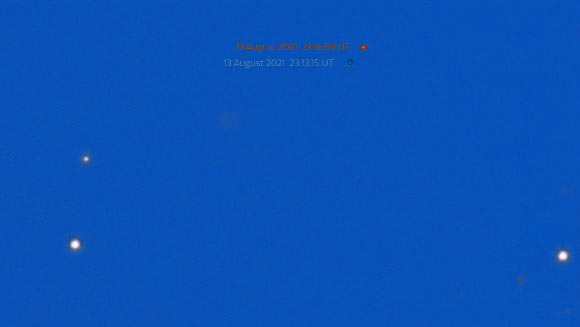The newly-discovered asteroid 2021 PH27 has a diameter of about 1 km (3,280 feet) and orbits the Sun in just 113 days — the shortest known orbital period for an asteroid and second shortest for any object in our Solar System after Mercury.
Source: Sci News
2021 PH27 has a semi-major axis of 70 million km (43 million miles, 0.46 AU), giving it a 113-day orbital period on an unstable elongated orbit that crosses the orbits of both Mercury and Venus.
This means that within a few million years it will likely be destroyed in a collision with one of these planets or the Sun, or it will be ejected from its current position.
2021 PH27 was discovered by Carnegie Institution for Science’s Dr. Scott Sheppard in images taken by Brown University astronomers Ian Dell’Antonio and Shenming Fu on August 13, 2021.
“Most likely 2021 PH27 was dislodged from the main asteroid belt between Jupiter and Mars and the gravity of the inner planets shaped its orbit into its current configuration,” Dr. Sheppard said.
“Although, based on its large angle of inclination of 32 degrees, it is possible that 2021 PH27 is an extinct comet from the outer Solar System that ventured too close to one of the planets as the path of its voyage brought it into proximity with the inner Solar System.”
An illustration of 2021 PH27’s orbit. Image credit: CTIO / NOIRLab / NSF / AURA / J. da Silva, Spaceengine.org.
Because 2021 PH27 is so close to the Sun’s massive gravitational field, it experiences the largest general relativistic effects of any known solar system object.
This is seen in a slight angular deviation in its elliptical orbit over time, a movement called precession, which occurs at about one arcminute per century.
Observation of Mercury’s precession puzzled scientists until Albert Einstein’s theory of general relativity explained its orbital adjustments over time. The precession of 2021 PH27 is even faster than Mercury’s.
“2021 PH27 gets so close to the Sun that its surface temperature gets to 482 degrees Celsius (900 degrees Fahrenheit) at closest approach, hot enough to melt lead,” Dr. Sheppard said.
The asteroid will soon pass behind the Sun and be unobservable from Earth until early next year, at which time observers will be able to refine its orbit to the precision needed to give it an official name.
The discovery of 2021 PH27 is reported in the Minor Planet Electronic Circular.
Source: Sci News

































Leave a Comment
You must be logged in to post a comment.